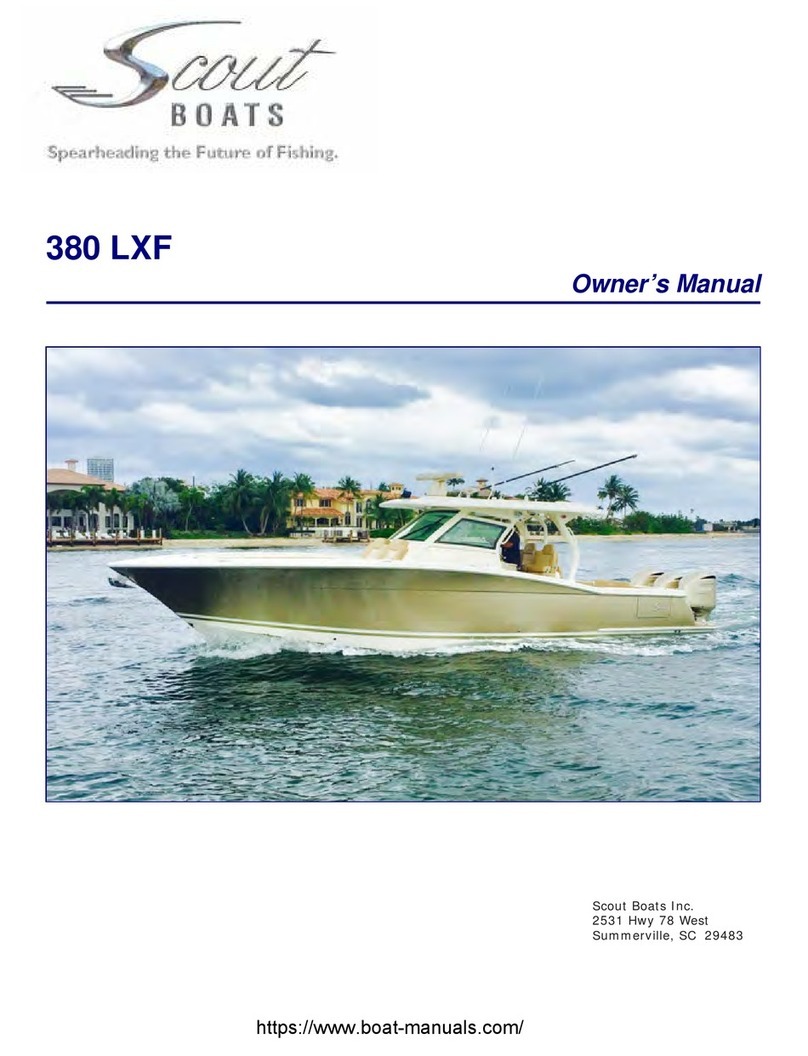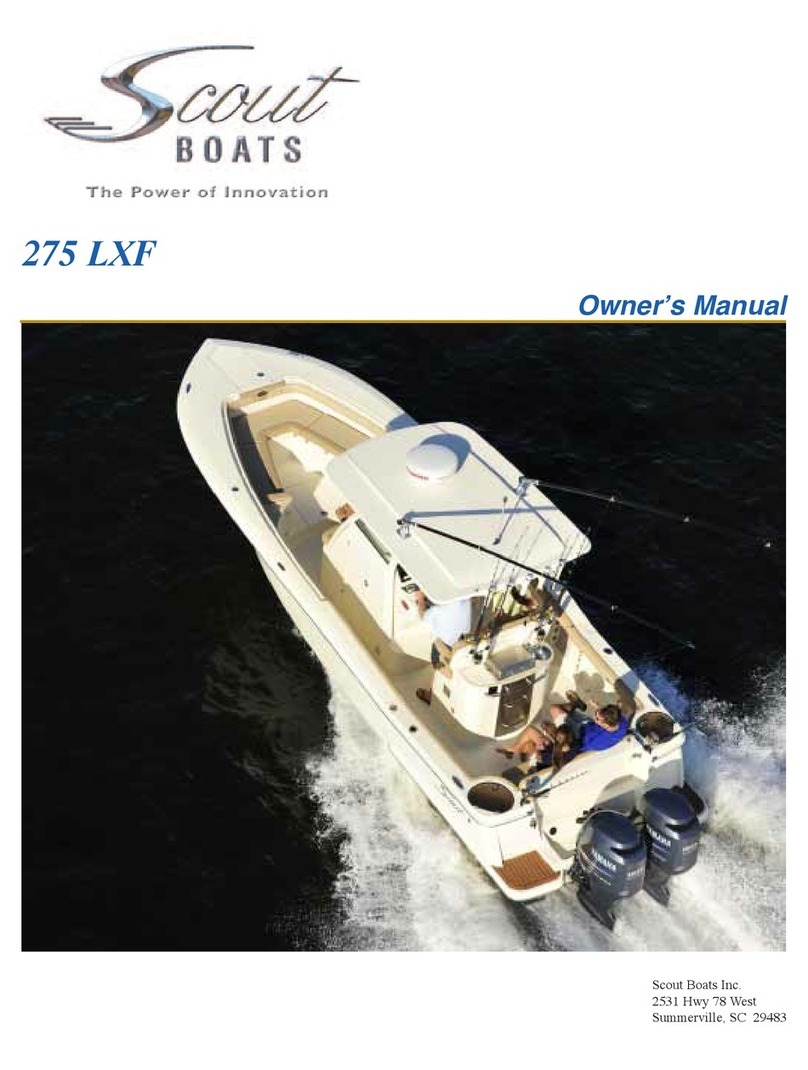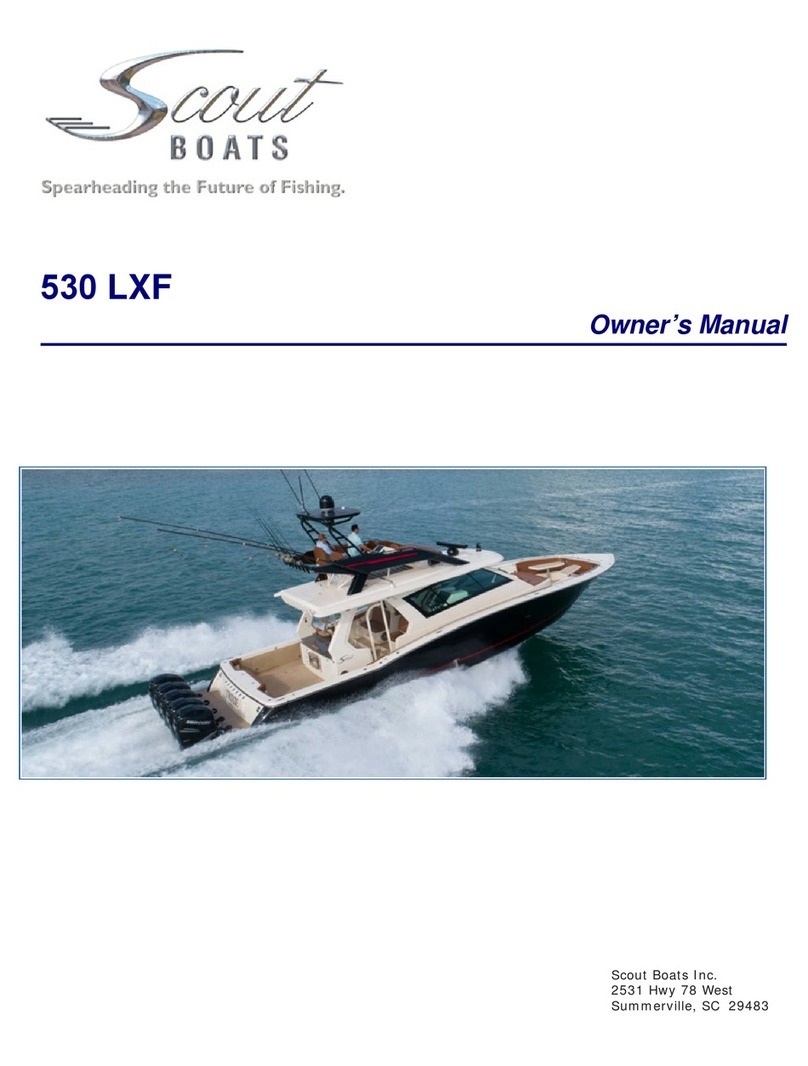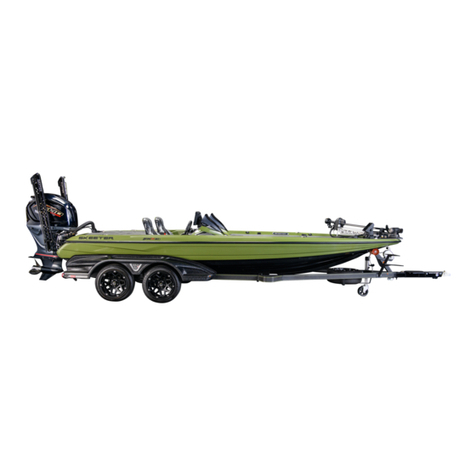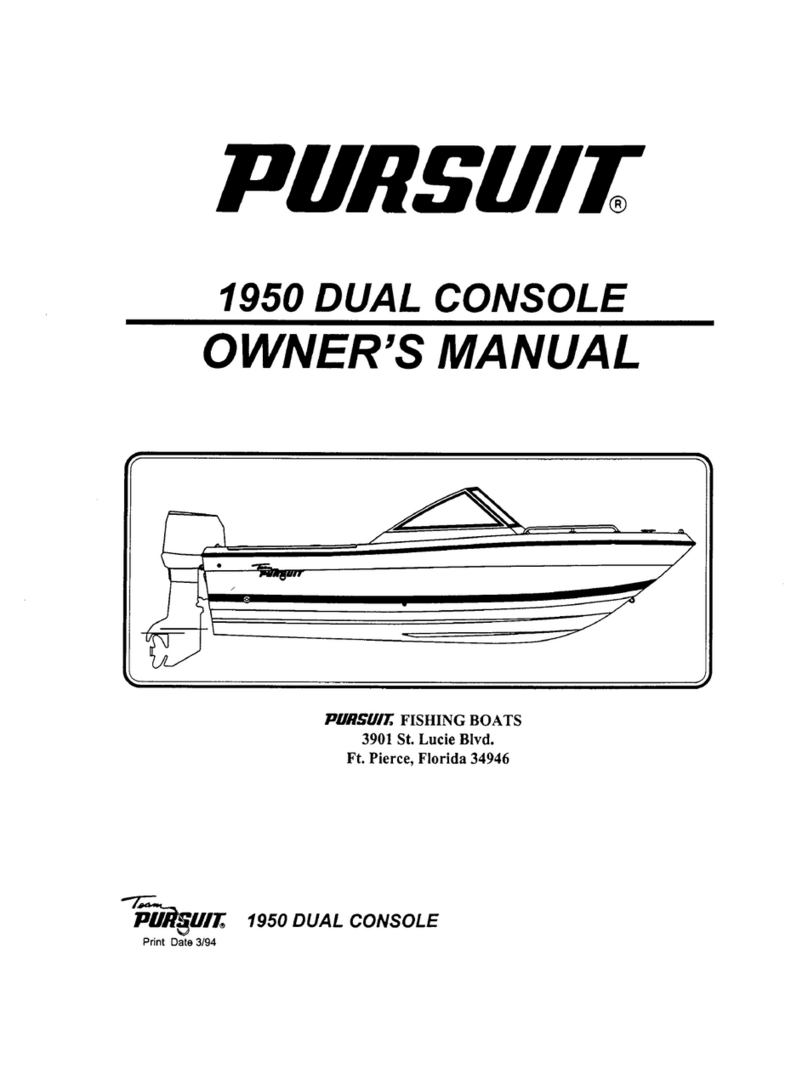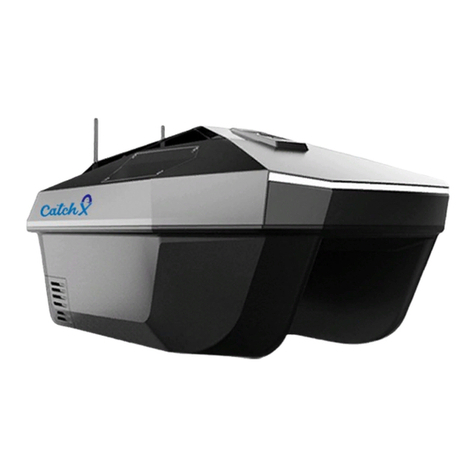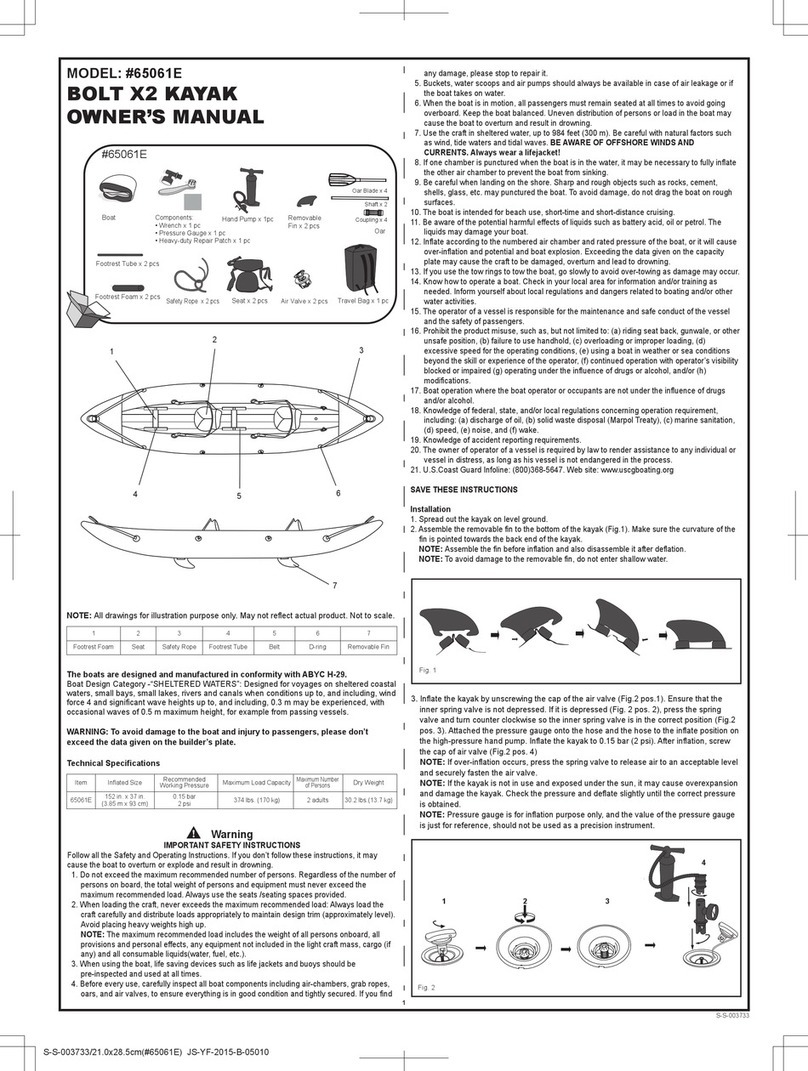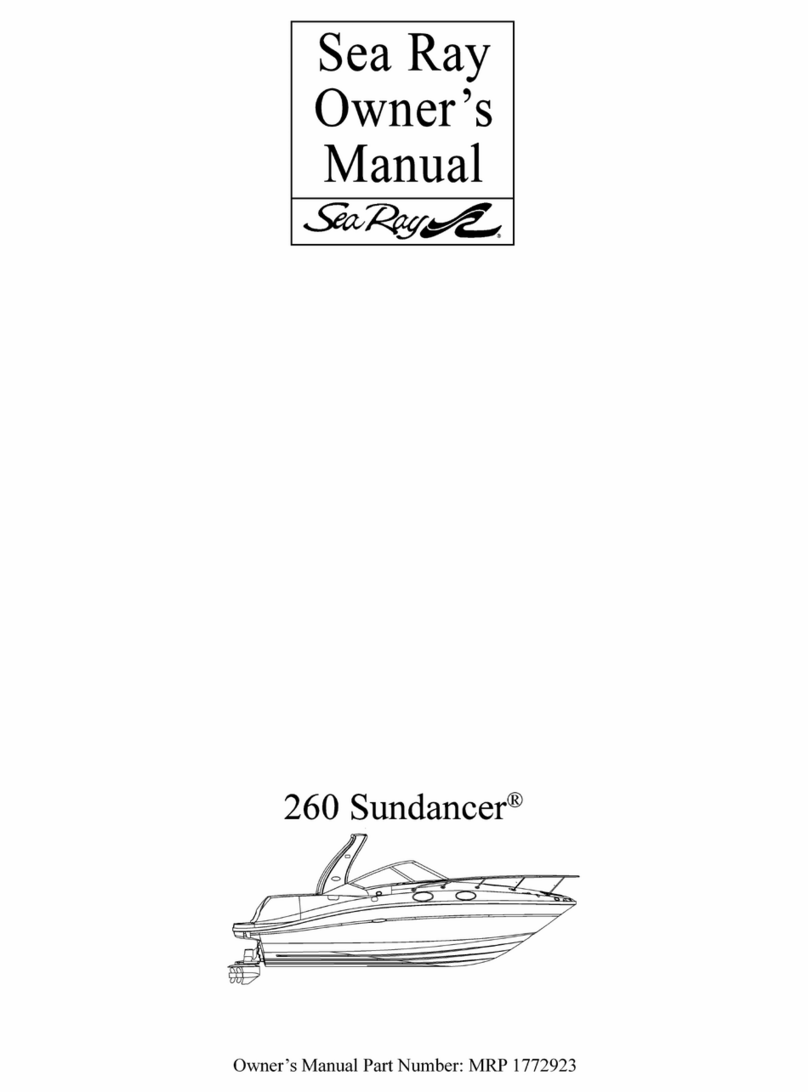
19
level indicator and the overheat warning indicator.
NEVER EXCEED THE MAXIMUM RECOMMENDED
OPERATION RPM OF THE ENGINE. MAINTAINING
MAXIMUM, OR CLOSE TO MAXIMUM RPM FOR
EXTENDED PERIODS CAN REDUCE THE LIFE OF
THE ENGINE.
Speedometer
The speedometer indicates the speed of the boat in miles per
hour. Most speedometers measure the water pressure against a
small hole in a pickup tube located in the engine lower unit or
mounted on the bottom of the transom. Yamaha speedometers
also contain the fuel meter and low fuel warning light, a trip
meter, a clock, and a voltmeter.
Overheat Warning Indicator
The temperature warning indicates that the temperature of the
engine is too high. A sudden increase in the temperature could
indicate an obstructed water inlet or an impeller failure. On
Yamaha engines the overheat warning indicator is built into
each tachometer and will start to blink if the engine tempera-
ture is too high.
CONTINUED OPERATION OF AN OVERHEATED
ENGINE CAN RESULT IN ENGINE SEIZURE. IF
AN UNUSUALLY HIGH TEMPERATURE READING
OCCURS, SHUT THE ENGINE OFF IMMEDIATELY.
THEN INVESTIGATE AND CORRECT THE
PROBLEM.
Fuel Gauges
The fuel gauge indicates the amount of fuel in the fuel tanks.
On boats equipped with Yamaha engines, the fuel gauge is built
into the Yamaha speedometer multi-gauge. The fuel indica-
tor on the Yamaha gauge will begin to blink if the fuel in the
monitored tank drops too low.
Voltmeter
The voltmeter displays the voltage for the battery and the
charging system. The normal voltage is 11 to 12-volts with
the engines off, and 13 to 14.5 volts with the engines running.
The Yamaha engine voltmeter is built into the speedometer. It
will begin to blink if the voltage in the battery drops too low.
Hour Meter
The hour meter keeps a record of the operating time for the
engine.
Engine Tilt/Trim Gauge
The tilt/trim gauge monitors the position of the outboard engine.
The upper range of the gauge indicates the tilt, which is used
for trailering and shallow water operation. The lower range
indicates the trim position. This is the range used to adjust the
hull angle while operating your boat on plane. The Yamaha
engine trim indicator is built into the tachometer. Please refer
the engine owner’s manual for more information on the opera-
tion of the outboard power tilt and trim.
Engine Alarms
All outboards are equipped with an audible alarm system
mounted in the helm area that monitors selected critical engine
systems. The alarm will sound if one of these systems begins
to fail. Refer to the engine owner’s manual for information on
the alarms installed with your engines.
IF THE ENGINE ALARM SOUNDS, IMMEDIATELY
SHUT OFF THE ENGINE UNTIL THE PROBLEM IS
FOUND AND CORRECTED.
Fuel Management
Fuel management systems are standard equipment with some
outboard engines. On Yamaha®engines, the fuel management
gauge is a multifunction gauge used to monitor the gallons
per hour, miles per gallon, total gallons used and engine syn-
chronization.
If you have a fuel management system installed on your boat,
please refer to the engine or fuel management manual for
detailed information on that system.
Depth Gauge (Optional)
The depth gauge indicates the depth of the water below the
bottom of the boat.
Compass
All boats are equipped with a compass on the top of the in-
strument panel. The compass cannot be adjusted accurately
at the factory as it must be compensated for the inuence of
the electrical equipment and electronics unique to your boat.
Therefore, the compass should be adjusted by a professional
after the electronics and additional electrical accessories are
installed and before operating the boat. To adjust the compass
for your area, read the instructions on “Compass Compensa-
tion” given to you in the literature packet.
Instrument Maintenance
Electrical protection for instruments and ignition circuitry is
provided by a set of fuses or circuit breakers located on each
engine. The ignition switches should be sprayed periodically
with a contact cleaner/lubricant. The ignition switches and all
instruments, controls, etc. should be protected from the weather
when not in use. Excessive exposure can lead to gauge and
ignition switch difculties.
























